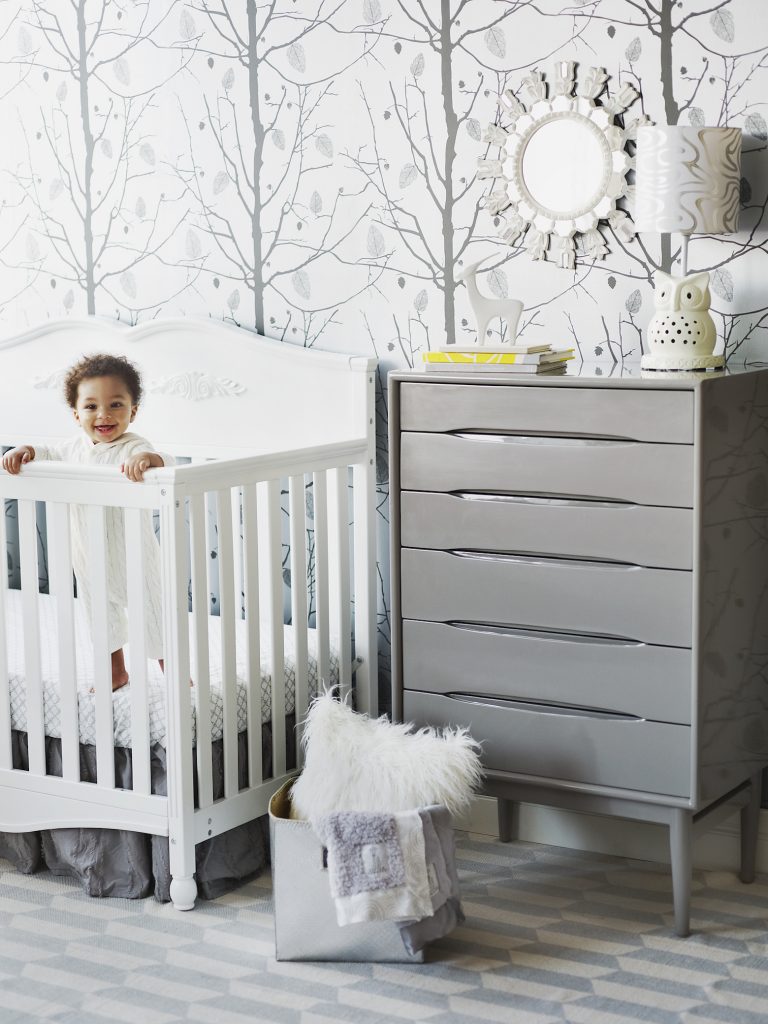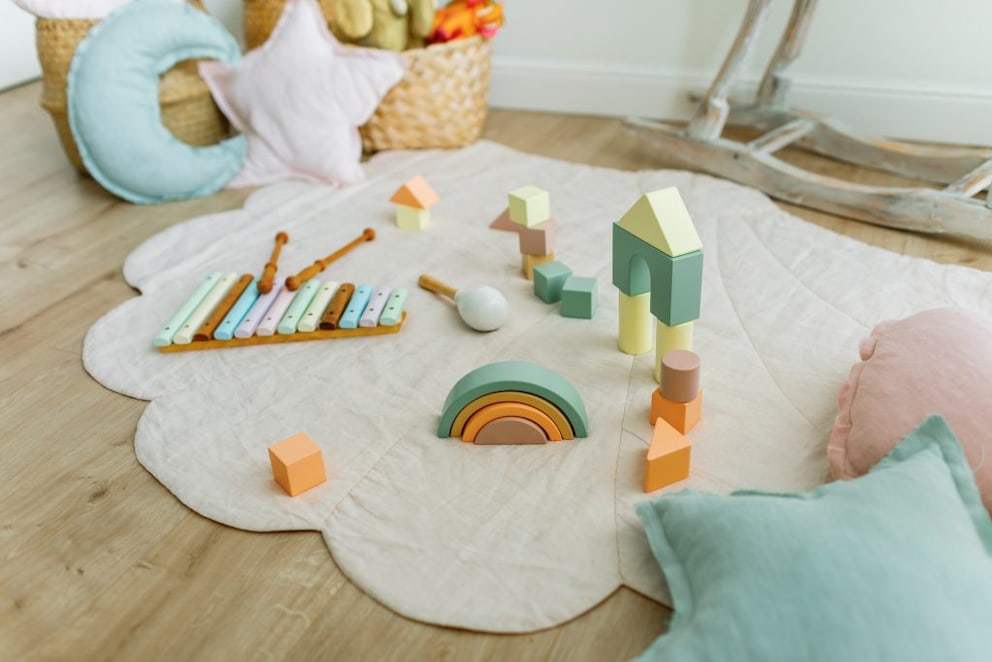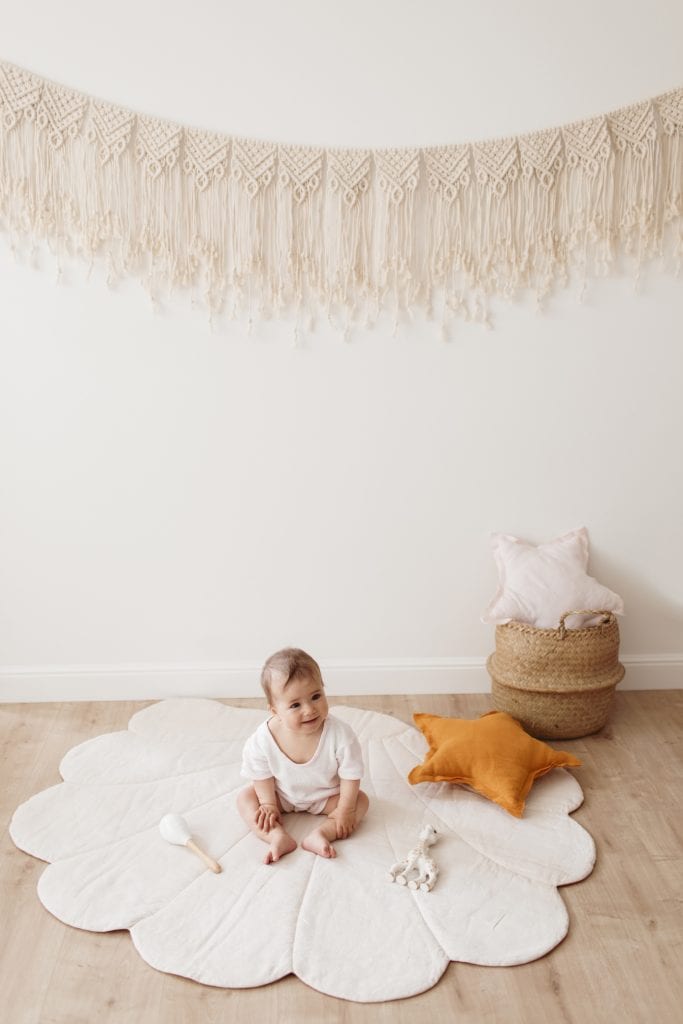July 7, 2025, 11:00 am | Read time: 4 minutes
Previously, setting up a nursery was often influenced by familiar (color) stereotypes. However, we are currently experiencing a shift toward a unisex look. MyHOMEBOOK editor and interior designer Odett Schumann explains how to successfully create a gender-neutral nursery.
When expecting a child, it was long considered fashionable to decorate the nursery in pink for girls or blue for boys, based on gender-specific roles. However, modern society values diversity and openness, aiming to create a space where a child can freely develop from birth. A unisex look is not defined solely by color choice; motifs, patterns, and materials also play a crucial role. MyHOMEBOOK editor and interior designer Odett Schumann explains how to successfully create a gender-neutral nursery.
Overview
Gender-Neutral Colors for the Nursery

For those who want to give the nursery a modern touch and aren’t fond of too much color, shades of white and light gray are popular choices. This sets a gender-neutral tone in the nursery, which can be combined with pastel accents as desired. Adding a few brightly colored accessories can create exciting highlights.
Natural tones also lend a distinctly gender-neutral color scheme to a nursery. Unlike white or gray tones, shades like cream, greige, sand, or olive add warmth, enhancing the comfort for the baby.
Harmonious Color Combinations for All Genders
Essentially, combine as you like! However, if a harmonious look is desired, the following color combinations are recommended: orange and blue, yellow and green, or red and gray. Each pair combines a warm and a cool tone, creating a neutral duo. It’s important to ensure the balance of each color is right. Orange and blue have similar intensities and can be used equally in the room. For the red-gray combination, more gray is needed to visually balance the strength of red. It’s advisable to use red for small furniture and accessories, while gray is better suited for walls and larger furniture.
Also interesting: Decorating with Natural Materials – 5 Fibers Compared
Neutral Natural Materials
Over time, materials have also developed gender-specific associations. Soft, fine, or smooth textures like plush or silk were often associated with girls, while rough, hard, and less elastic materials like concrete or steel were seen as masculine. It may take time to completely shed these associations, but combining feminine and masculine materials can create a neutral effect. The key is the right balance in the room. A successful, balanced material mix might include a gray concrete-look wall softened with a cream-colored macramé wall hanging, a cozy wool blanket, or a gently draping canopy, creating a cozy, neutral nursery.

Some materials are generally considered gender-neutral. Wood is a prime example: regardless of the wood tone, this charismatic material can be used almost universally. Light woods like maple, ash, or birch are particularly suitable for a nursery, bringing warmth and cheerfulness with their slightly yellowish hue. In recent years, storage baskets made from natural fibers like seagrass, banana leaf weave, or hyacinth have become popular. Their natural color and texture make them versatile, and such baskets are also well-suited for a gender-neutral nursery. There are even childlike models adorned with colorful pompoms or partially dyed.
Animal and Plant Motifs That Appeal to Everyone
Not only colors but also motifs have been traditionally assigned to different genders. However, a more neutral selection is now available. Nature offers plenty of inspiration for gender-neutral nursery decor. In addition to wild animals like monkeys, lions, or elephants, floral or botanical motifs such as oversized monstera leaves, jungle vines, and exotic flowers now adorn the walls of children’s rooms for both girls and boys. For a calmer ambiance, floating clouds or stars at varying heights and surfaces offer a lovely design option.
Also interesting: 5 Beautiful and Practical Changing Tables

How to Properly Design Children’s Room Walls

Children’s Room Trends for 2022

These Are the Color Trends for Summer 2025
Harmonious Shapes and Lines in the Room

Shapes and lines are also somewhat linked to gender-specific associations. Angular and edgy are considered masculine, while round and flowing are seen as feminine. To achieve a balanced look, it’s important to avoid overemphasizing one style. Too many corners and edges can create an uncomfortable atmosphere. It’s advisable to use small color accents on the wall combined with a striped curtain at the window. Alternatively, an oval crib can be paired with a more boxy wardrobe.

